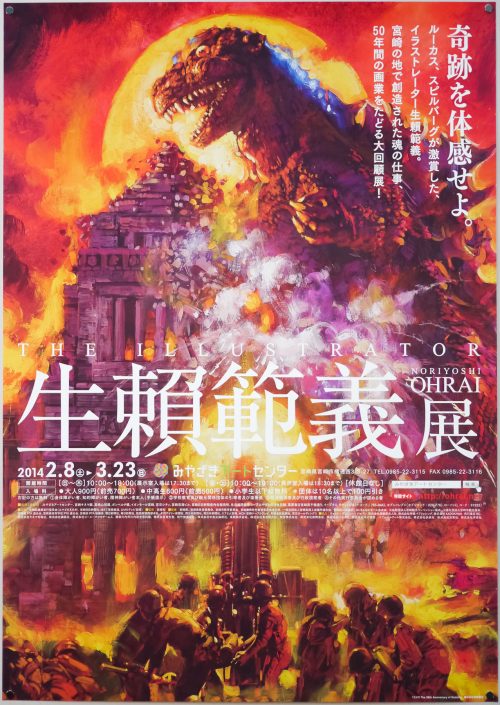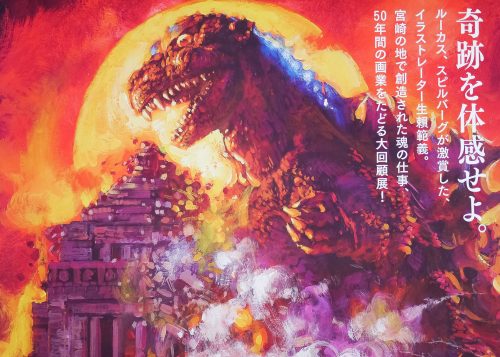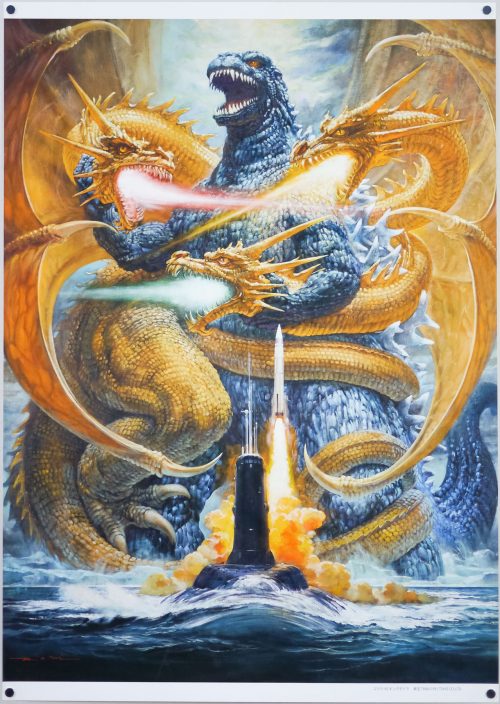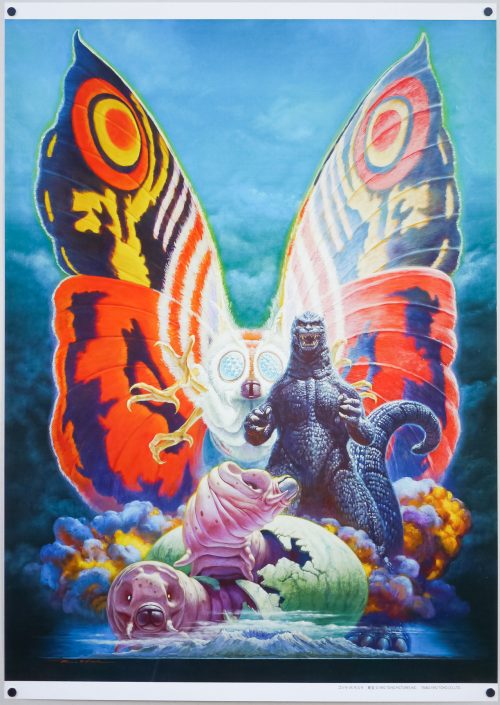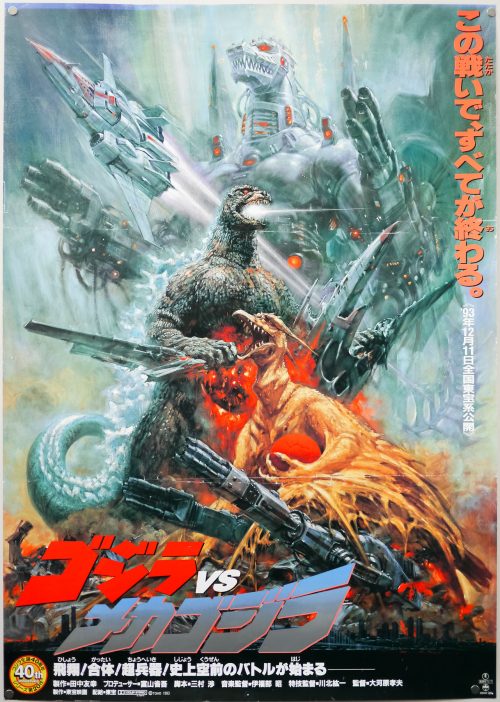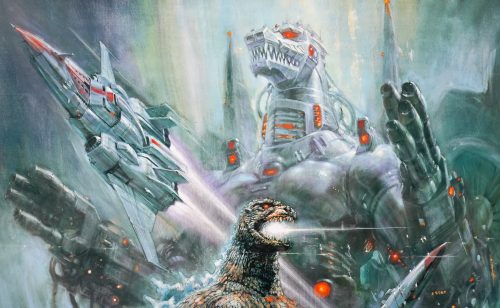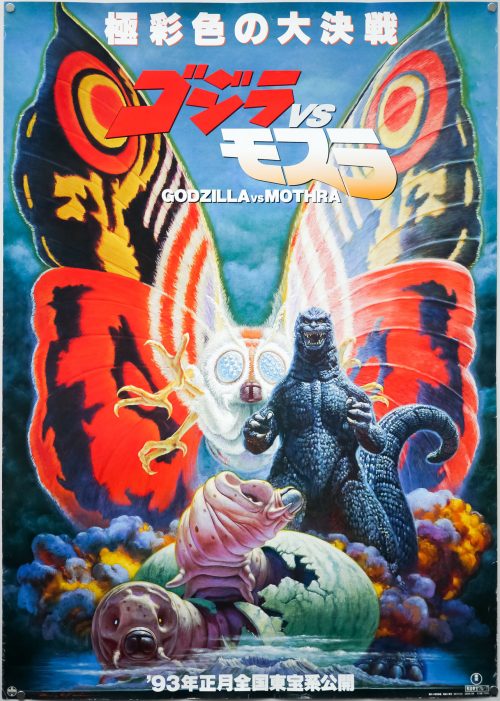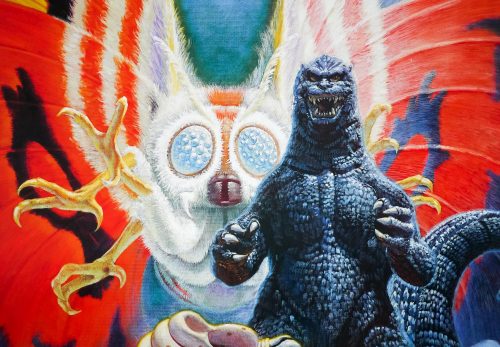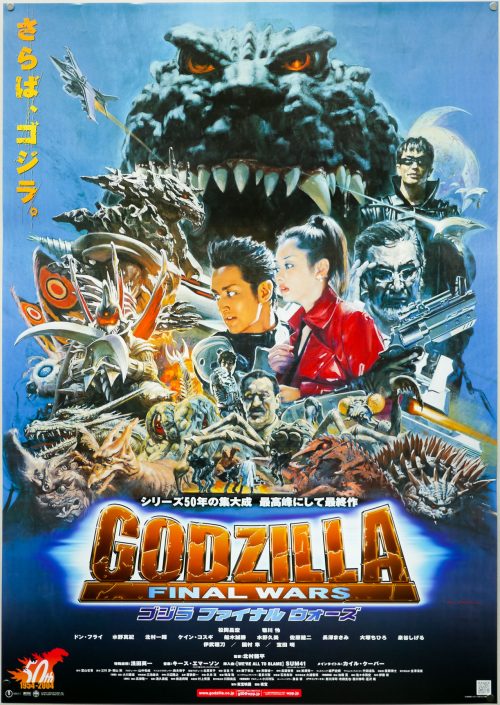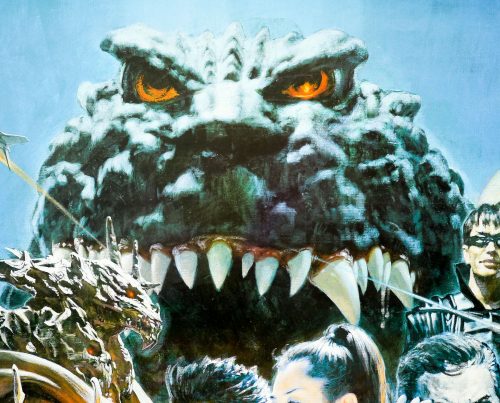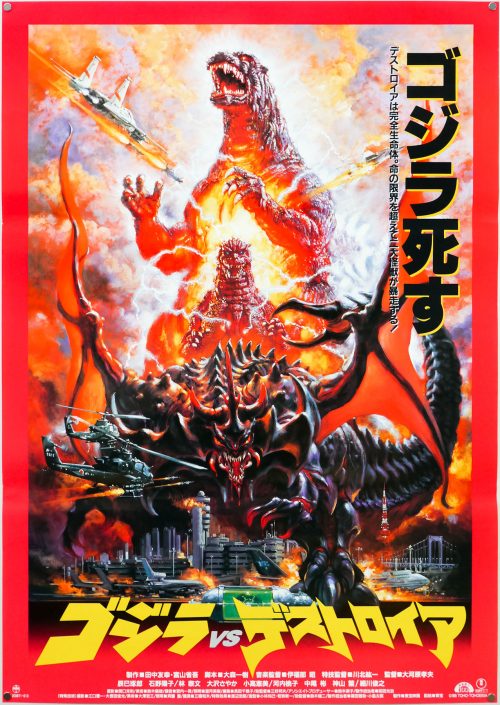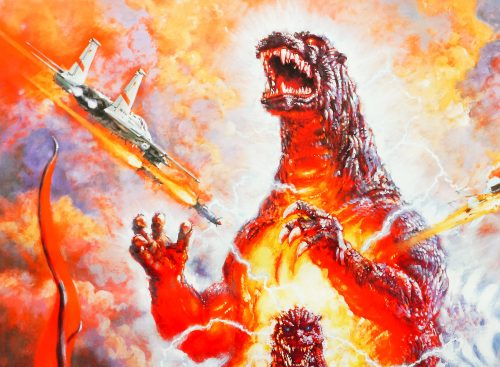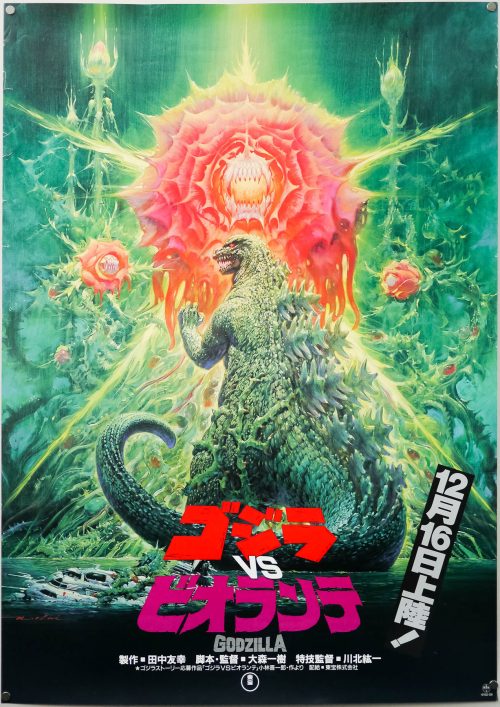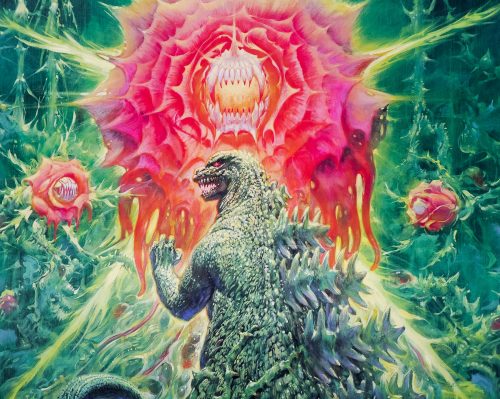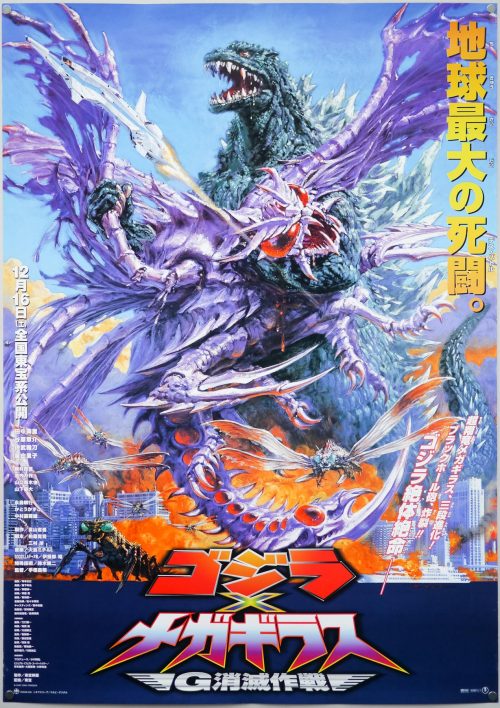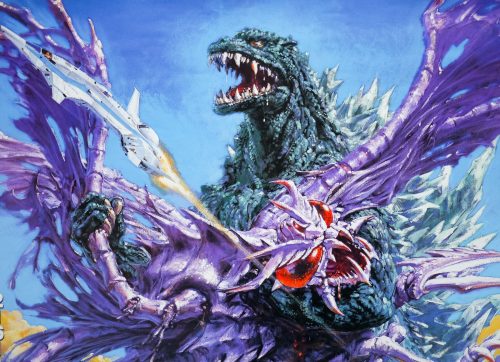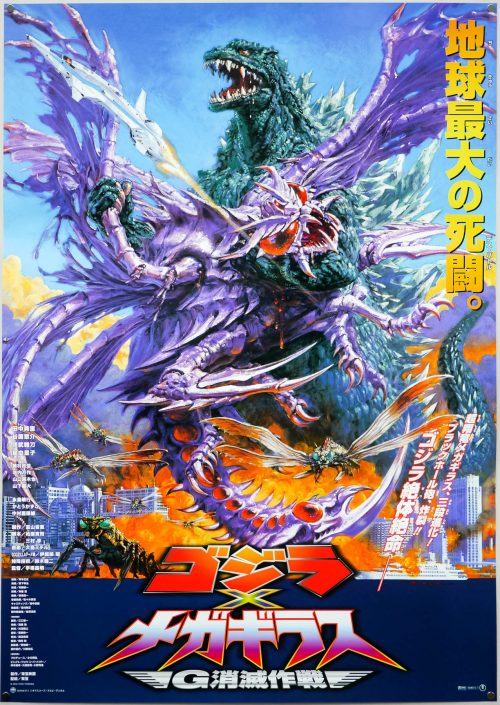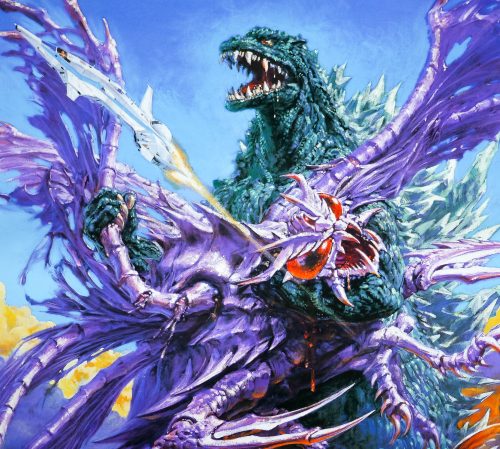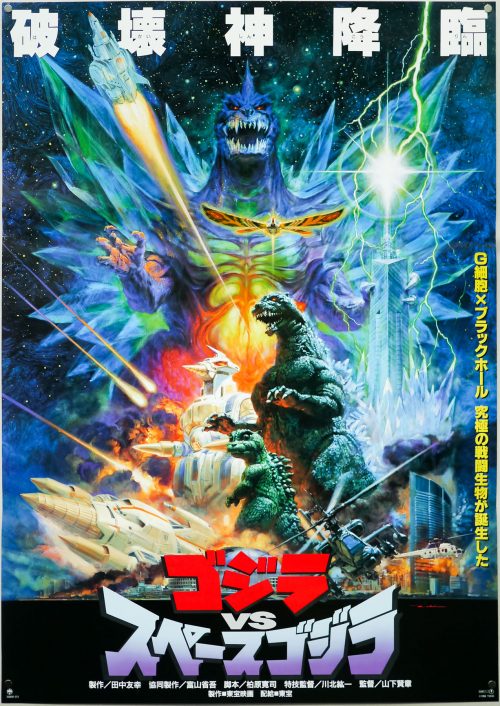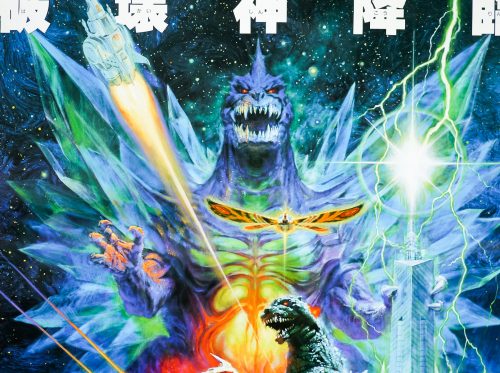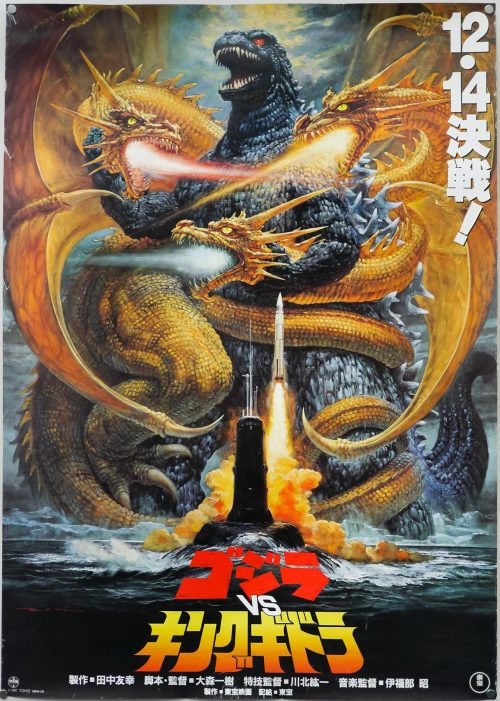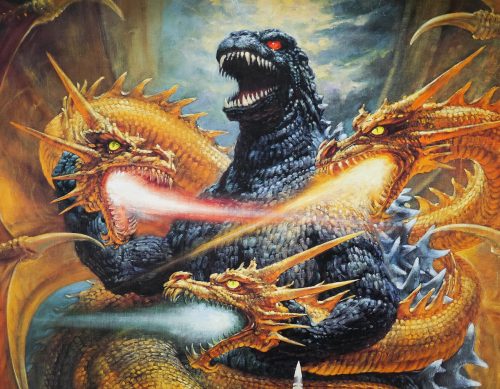- Title
- Godzilla vs Destroyah
- AKA
- Gojira vs. Desutoroiâ (Japan - original title)
- Year of Film
- 1995
- Director
- Takao Okawara
- Starring
- Takurô Tatsumi, Yôko Ishino, Yasufumi Hayashi, Megumi Odaka, Sayaka Osawa, Saburô Shinoda, Akira Nakao, Masahiro Takashima, Momoko Kôchi, Shigeru Kôyama, Ronald Hoerr
- Origin of Film
- Japan
- Genre(s) of Film
- Takurô Tatsumi, Yôko Ishino, Yasufumi Hayashi, Megumi Odaka, Sayaka Osawa, Saburô Shinoda, Akira Nakao, Masahiro Takashima, Momoko Kôchi, Shigeru Kôyama, Ronald Hoerr,
- Type of Poster
- B2
- Style of Poster
- Artwork
- Origin of Poster
- Japan
- Year of Poster
- 1995
- Designer
- Unknown
- Artist
- Noriyoshi Ohrai
- Size (inches)
- 20 6/16" x 28 13/16"
- SS or DS
- SS
- Tagline
- --
Artist Noriyoshi Ohrai provides another great illustration on this Japanese poster for the release of Godzilla vs Destroyah, which was the 22nd film in the series featuring the King of the Kaiju (giant monsters). The film was also the final release in the second generation of Godzilla films, which were part of the Heisei era of Japanese monster movies (daikaiju eiga). The eras are named after the Japanese emperor at the time, so the first generation of Godzilla films were part of the Shōwa era.
Prior to release the production company Toho announced that this film would see the death of this incarnation of the legendary kaiju in order to make way for an American version of Godzilla (a film that was eventually released in 1998 to critical derision). The film begins with Miki Saegusa (Megumi Odaka), the psychic who has has previously used her powers to communicate with Godzilla, discovering that his home on Birth Island has been completely destroyed by an unknown force. Sometime later Godzilla appears near Tokyo covered in glowing, red hot rashes and the Japan Self Defense Force instructs a scientist to investigate what’s causing his condition.
It is soon discovered that Godzilla’s heart, which is effectively a nuclear reactor, is going into meltdown and once it reaches 1200 degrees Celsius it will explode with the force of 1000 nuclear bombs. The JSDF launch the flying attack fortress Super X-III to try to keep control of the situation. Meanwhile, scientists have developed a new formula for the ‘Oxygen Destroyer’ weapon that was originally created by Dr. Serizawa back in 1954 (the original Godzilla film) but fears over its side effects are realised when a number of mutated creatures are found to have been infected by the formula and are growing at an alarming rate. Quickly they evolve into crab-like creatures that start attacking Japan and have several skirmishes with the JSDF who dub the eventual combined creature ‘Destroyah’. Godzilla Junior reappears, greatly resembling his father, and the stage is set for several showdowns between Destroyah and the two Godzillas whilst scientists race to try and prevent a meltdown disaster.
This film features several calls back to the original 1954 Godzilla, including a cameo by Momoko Kôchi who played Emiko Yamane in the original film. This bit of trivia on IMDb hints at an early planned version of the final Heisei era Godzilla film:
An original idea for this movie had Godzilla fighting the original 1954 Godzilla in ghost form. The project, “Godzilla VS Ghost Godzilla”, was scrapped because the producers thought Godzilla didn’t need to fight a clone version of himself for three movies in a row, following Godzilla vs. Mechagodzilla(1993) and Godzilla vs. Space Godzilla (1994).
The artwork on the poster is by the late Noriyoshi Ohrai who was something of an enigma, even in his native Japan. Ohrai painted a poster for each of the Heisei era of Godzilla films, which were always accompanied by a photographic-style poster. He’s responsible for a number of Star Wars posters, including this lovely 1982 B2 to celebrate the release of the Japanese dubbed version of the original film and the brilliant design for The Empire Strikes Back.
The other Ohrai posters I’ve added to the site so far can be seen by clicking here.
